AH Almuhanna
Optimisation and validation of immunohistochemical axonal markers for morphological and functional characterisation of equine peripheral nerves
Almuhanna, AH; Cahalan, SD; Lane, A; Goodwin, D; Perkins, J; Piercy, RJ
Authors
SD Cahalan
A Lane
D Goodwin
J Perkins
RJ Piercy
Abstract
Background: Horses are affected by various peripheral nerve disorders but defining their aetiology and pathophysiology is hampered by limited understanding of associated morphological and pathological changes and involvement of specific axonal types. Objectives: To investigate the hypothesis that selected antibody markers, used in conjunction with various tissue processing methods, would enable identification of axons with different functional modalities within a range of equine peripheral nerves. Study design: Optimisation and validation study. Methods: A range of antibodies were evaluated immunohistochemically via fluorescence confocal microscopy in cadaver equine nerve samples of primary motor, mixed or primary sensory functions (recurrent laryngeal, phrenic and plantar digital) within formalin-fixed paraffin-embedded (FFPE) and formalin-fixed frozen (FFF) tissues subjected to different antigen retrieval protocols. Results: Immunohistochemistry of FFPE-derived nerve samples with selected antibodies and specific antigen retrieval methods enabled identification of myelinated and unmyelinated axons, cholinergic, sympathetic and peptidergic axons. The recurrent laryngeal and phrenic nerves are composed of myelinated cholinergic (motor), myelinated sensory fibres, unmyelinated adrenergic (sympathetic) axons and unmyelinated peptidergic (sensory) axons. In contrast, as expected, the plantar digital nerve had no myelinated motor fibres being mainly composed of myelinated sensory fibres, unmyelinated sympathetic and unmyelinated peptidergic sensory axons. Main limitation: Attempts specifically to label parasympathetic fibres were unsuccessful in any nerve examined in both FFPE and FFF tissues. Conclusions: A panel of antibody markers can be used to reveal morphological and functional properties of equine nerves. Future work should enable better characterisation of morphological changes in equine neuropathies at various stages of disease development.
Citation
Almuhanna, A., Cahalan, S., Lane, A., Goodwin, D., Perkins, J., & Piercy, R. (2021). Optimisation and validation of immunohistochemical axonal markers for morphological and functional characterisation of equine peripheral nerves. Equine Veterinary Journal, 53(6), 1188-1198. https://doi.org/10.1111/evj.13403
| Journal Article Type | Article |
|---|---|
| Acceptance Date | Dec 17, 2020 |
| Publication Date | 2021 |
| Deposit Date | Nov 22, 2021 |
| Publicly Available Date | Nov 22, 2021 |
| Journal | Equine Veterinary Journal |
| Print ISSN | 0425-1644 |
| Electronic ISSN | 2042-3306 |
| Publisher | Wiley |
| Peer Reviewed | Peer Reviewed |
| Volume | 53 |
| Issue | 6 |
| Pages | 1188-1198 |
| DOI | https://doi.org/10.1111/evj.13403 |
| Keywords | peripheral neuropathy; immunohistochemistry; recurrent laryngeal; antibody; horse; nerve |
| Public URL | https://rvc-repository.worktribe.com/output/1552680 |
Files
oa
(1.7 Mb)
PDF
Publisher Licence URL
http://creativecommons.org/licenses/by/4.0/
You might also like
Human-relevant near-organ neuromodulation of the immune via the nerve
(2021)
Journal Article
The cholinergic anti-inflammatory pathway inhibits inflammation without lymphocyte relay
(2023)
Journal Article
Organotopic organization of the porcine mid-cervical vagus nerve
(2023)
Journal Article
Downloadable Citations
About RVC Repository
Administrator e-mail: publicationsrepos@rvc.ac.uk
This application uses the following open-source libraries:
SheetJS Community Edition
Apache License Version 2.0 (http://www.apache.org/licenses/)
PDF.js
Apache License Version 2.0 (http://www.apache.org/licenses/)
Font Awesome
SIL OFL 1.1 (http://scripts.sil.org/OFL)
MIT License (http://opensource.org/licenses/mit-license.html)
CC BY 3.0 ( http://creativecommons.org/licenses/by/3.0/)
Powered by Worktribe © 2025
Advanced Search
